Kennedy Lab Members
Lesley Shelley - PhD Candidate
 Immunotoxicology of selected current-use pesticides in juvenile salmonids Immunotoxicology of selected current-use pesticides in juvenile salmonids
Pesticides are a class of chemicals that are deliberately released into the environment with the express intention of causing lethality to a target species. A survey completed in 2003 found that there was over 500,000 kg of total pesticides sold in the Lower Mainland region alone and over 1 million kilograms of pesticides sold province-wide. Thus it is not surprising to find that current use pesticides are being frequently detected in environmental samples and that effects on non-target species may be a concern. Immunotoxicity, a form of sublethal toxicity, considers how chemicals may impact the immune system of an organism. Fish are regularly exposed to bacterial and other pathogens in their natural aquatic environment and a healthy, functional immune system is imperative for their survival. Depression of the immune system by anthropogenic chemicals, such as pesticides, can lead to increased susceptibility to infection with pathogenic organisms and subsequent morbidity or mortality which may contribute to population level declines in fish species. The focus of my research is to examine the effects of several current use pesticides on the immune system of rainbow trout. Assays will be done at the molecular/biochemical (serum lysozyme, complement and cortisol), cellular (differentials, phagocytosis, respiratory burst) and whole organism levels in order to assess overall immunocompetence following environmentally-relevant sub-chronic pesticide exposure. Additionally, the ability of the fish immune system to recover from pesticide insult will be investigated.
Walter Leung - MET Candidate
 Immunotoxicity of current use pesticies in 2 salmonid species Immunotoxicity of current use pesticies in 2 salmonid species
Pesticide use is high in the province of British Columbia where over 4 million kgs were sold in 2003. There is concern that sensitive salmon habitats are at the receiving end of a complex mixture of current use pesticides (CUP), which have been detected frequently in environmental samples. Even at low concentrations, some pesticides can induce immunosuppresion in fish. Our research will focus on screening and characterizing various CUP’ and their immunotoxic potential in fish, understanding underlying molecular mechanisms, and/or providing support on establishing biomarkers for detecting immunotoxicity in fish.
In order to answer if and how a CUP is immunotoxic, we will assess perturbations in fish immune system by employing immunoassays that monitor immune suppression/activation, immunopathology and a pathogen challenge model. The latter provides a definitive answer on the ability of a CUP to lower disease resistance of fish to a real world pathogen, which may affect fish population dynamics; this research is of prime importance in risk assessment and regulation decision making. Since the immune responses involved in disease resistance are complex and that may rely on different parts of the immune system, we will attempt to characterize the different responses by employing multiple flow cytometric based and microplate based assays to assess changes in the functionality of immune cells, cell population proportions, and quantify important humoral factors responsible for disease resistance.
Michelle Stockwell - MET Candidate
 Physiological effecs of emamectin benzoate in salmonids Physiological effecs of emamectin benzoate in salmonids
Aquaculture is a major contributor to the economy of British Columbia. Specifically, BC is producing more then 40 000 tonnes of net pen raised salmon annually. Although the benefits of this sector are obvious and substantial, there are concerns regarding the practices involved with salmon farming and the impacts they have on the surrounding natural environment. One such practice is the usage of emamectin benzoate for the treatment of sea lice infections in fish farms. The close quarters with in which farmed salmon are reared create ideal habitat for the proliferation of sea lice. In order to control these outbreaks and prevent the damaging effects of these copepods, emamectin benzoate is administered to the farmed salmon in there feed. Little is known about the possible impacts that can occur to the aquatic environment as a result of this treatment. The purpose of my research is to expand our understanding of emamectin benzoate as a sea lice treatment and provide evidence regarding the safety of this compound to the surrounding aquatic environment. The endpoints of my research are to: (1) test the ability of native Pacific coho salmon to detect and avoid this compound as well as (2) investigate sublethal exposures of emamectin benzoate on swimming capacity and behavior.
Ariel Blanc - MET Candidate
 Two-cycle engines, PAHs and CYP1A in fish gill tissue as a biomarker of contaminant exposure Two-cycle engines, PAHs and CYP1A in fish gill tissue as a biomarker of contaminant exposure
Two-cycle engines inefficiently burn fuel; watercraft propelled by these engines can discharge up to thirty percent of their fuel directly into the water column. Of the fuel related compounds released, polycyclic aromatic hydrocarbons (PAHs) are considered the most toxic and have been shown be mutagenic, carcinogenic, immunotoxic and are also classified as type I narcotic compounds.
A small and relatively undeveloped lake in southeast Alaska experiences high levels of two-cycle engine activity during the summer months. Previous studies have correlated seasonal increase of engine use with increased levels of PAHs accumulating in time integrated passive samplers placed in lake. Over the last decade, anadromous salmon species in the lake have declined significantly and some resident organisms have potentially disappeared altogether. My project focuses on determining if a link exists between the seasonal PAH loading in the water column and a measurable physiological response in lake fish. This will be accomplished using a biomonitoring approach in which juvenile salmonids are caged in the lake during high two-cycle engine use. Their gill tissue with be analyzed for upregulation of cytochrome P4501A (CYP1A), a phase I mixed function oxidase enzyme which is induced by and also modifies planar, non-polar exogenous compounds such as PAHs. CYP1A metabolism of PAHs leads to formation of polar products which can be carcinogenic epoxides, reactive intermediates or compounds that can be excreted from the body. An increase in basal gill CYP1A levels, as measured by 7-ethoxyresorufin O-deethylation (EROD) activity, would indicate that the toxic fuel related compounds in the lake are bioavailable and that exposure concentrations are capable of causing a physiological response in lake fish.
Jennifer Trowell - MET Candidate

BIOTRANSFORMATION OF PERSISTENT ORGANIC POLLUTANTS IN RAINBOW TROUT (ONCORHYNCHUS MYKISS) HEPATOCYTES
Current methods for determining whether a chemical bioaccumulates in wildlife (using octanol-water partition coefficients, Kow, or applying bioaccumulation models) are unable to take into account the degree of chemical biotransformation in the organism. My current research goals are to provide required information about the metabolic transformation rates to make accurate assessments of the bioaccumulation behaviour of chemicals. Hepatocytes, as the primary site of biotransformation of xenobiotics in fish species, are being used as an in vitro model of biotransformation, for extrapolation to the whole organism. We are testing organic pollutants with high log Kow values, as these chemicals are most likely to bioaccumulate. We are examining the extent of hepatic metabolism of a variety of compounds, ranging from plasticizers to pesticides. Hepatocytes are dosed using two methods, conventional dosing and via an ethylene vinyl acetate (EVA) film linings. Using GC-MS, parent compound(s) are measured in hepatocyte incubates to determine the rate of biotransformation. The rates of biotransformation of these hydrophobic chemicals will be compared to known metabolized pollutants, such as benzo[a]pyrene. These data will be used to model the bioaccumulative potential of environmental contaminants in fish, to aid in global efforts to develop rigorous, scientifically sound methods for international chemical evaluation processes.
Tim Gray - MET Candidate

Alumni Lab Members
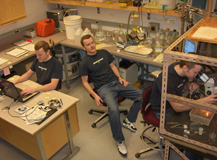 |
|
| Keith Tierney (PhD) |
| Thesis: Neurotoxicity of current use pesticides; physiology to ethology |
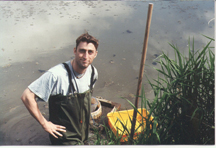 |
|
| Ryan Loveridge (MSc) |
Thesis: Effects of agricultural effluent on red-legged frogs and three-spine sticklebacks in the Elk Creek and Sumas Prairie Watersheds B.C., Canada |
 |
|
| Heather Osachoff (MSc) |
| Thesis: Toxicogenomics effects of sewage on juvenile chinook salmon (Oncorhynchus tshawytscha) |
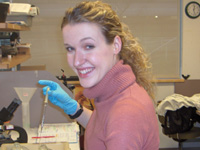 |
|
| Meagan Gourley (MET) |
| The effects of dietary energy on cellular defense mechanisms |
 |
|
| Jenn Hildebrand (MET) |
| The energetic costs of P-glycoprotein-mediated xenobiotic transport |
 |
|
| Helena Daudt (PhD) |
Thesis: Endocrine disruption by cadimum: mechanisms and effects on the reproductive axis and stress response in rainbow trout |
 |
|
| Mika Mokkonen (Research Technician) |
| Project: Growth tradeoffs of pyrene exposure in rainbow trout |
 |
|
| Leslie Caroll - Research Technician |
Project: The immune responses of rainbow trout exposed to current use pesticides. Effects of pesticide exposure on smoltification and osmoregulation in Atlantic salmon. Ecologically relevant alterations of juvenile sockeye reared in low pH. |
 |
|
| Ann Lee (MET) |
Thesis: Estimating metabolic costs of pyrene exposure using whole animal respirometry |
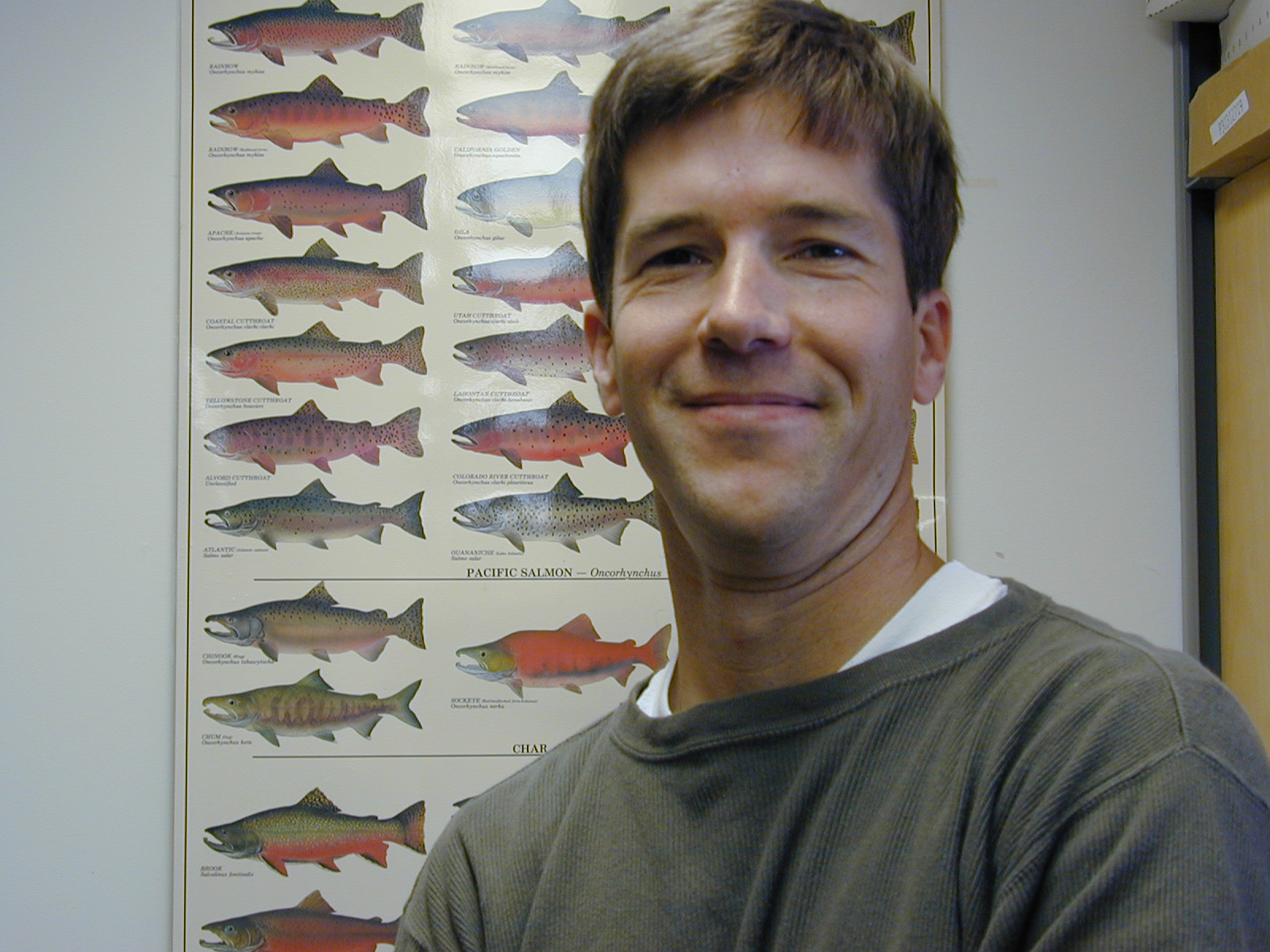 |
|
| Hugh Jarrard (PDF) |
Research: Olfactory neurotoxicity of pesticides in salmonids |
 |
|
| Onkar Bains (MET) |
Thesis: Energetic costs of pyrene metabolism in isolated hepatocytes of trout, Oncorhynchus mykiss. |
 |
|
| Andrew Wan (MET) |
Thesis: The role of carboxylesterase in organophosphorous pesticide toxicity at the olfactory epitaelium of coho salmon
|
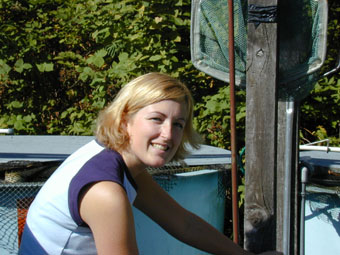 |
|
| Michelle Morrow (MET) |
Thesis: Effects of diet composition on the stress response of rainbow trout, Oncorhynchus mykiss |
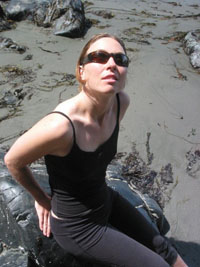 |
|
| Barri-Lynn Rudolph (MET) |
Thesis: The effects of selenium on Westlope cutthroat trout reproduction and development |
 |
|
| John Seubert (MSc) |
Thesis: Effects of smoltification and salinity on the metabolism and excertion of benzo[a]pyrene in coho salmon, Oncorhynchus kisutch |
Rosemarie Ganassin (PDF)
Research: In vitro cell systems to study PAH toxicity in herring and trout
Susan Sanders (PhD)
Thesis: Immunotoxicology of Pacific Herring: Determination of reference ranges and their application to assessing exposure to the water-soluable fraction of crude oil
Blair Johnston (PhD)
Thesis: Thermal modulation of the excretion of benzo[a]pyrene toxicokinetics in teleosts
Kevin Smyth (MSc)
Thesis: The effects of mixed function oxidases on sex steroid kinetics of trout
Malgorzata Lemke (MSc)
Thesis: Alterations of xenobiotic uptake and metabolism of during smoltification in coho salmon, Oncorhynchus kisutch
James Manders (MAq)
Thesis: A current analysis of the status and prospects for the nurturing of the Pacific oyster, Crassostera gigas, in B.C.
Graduate Student Poster Competition Winner 2006
|

|